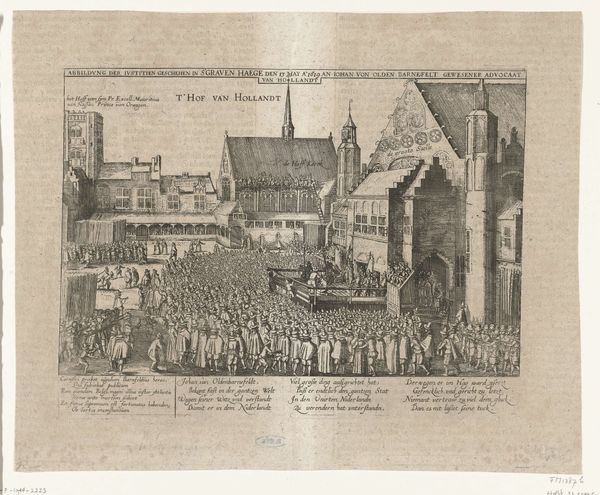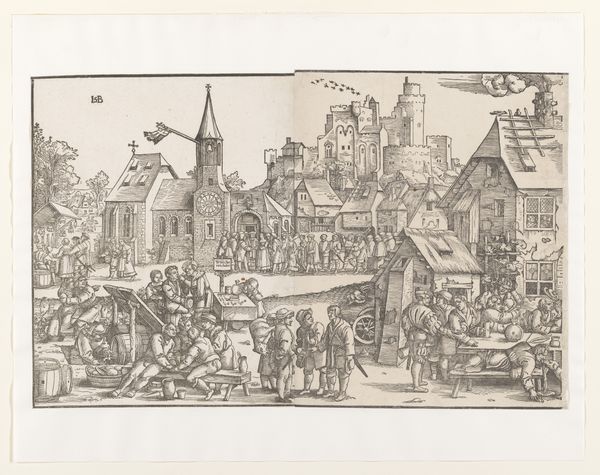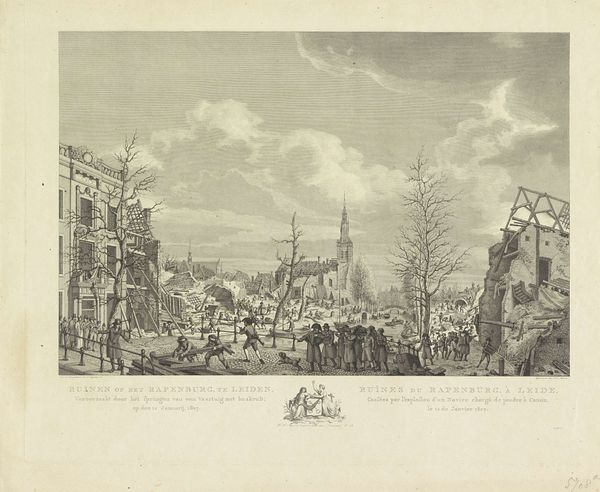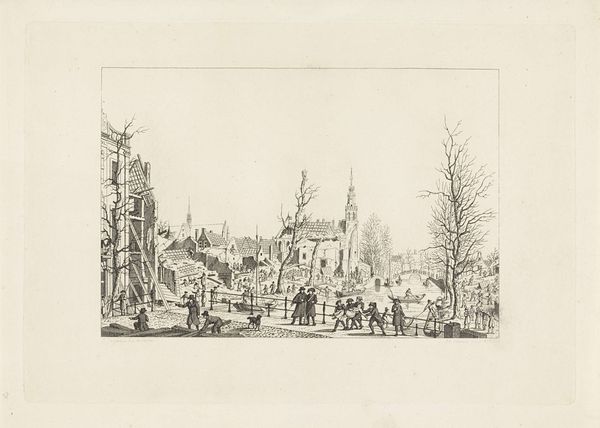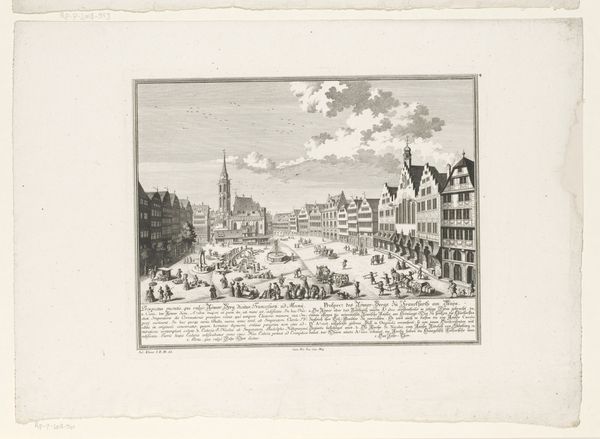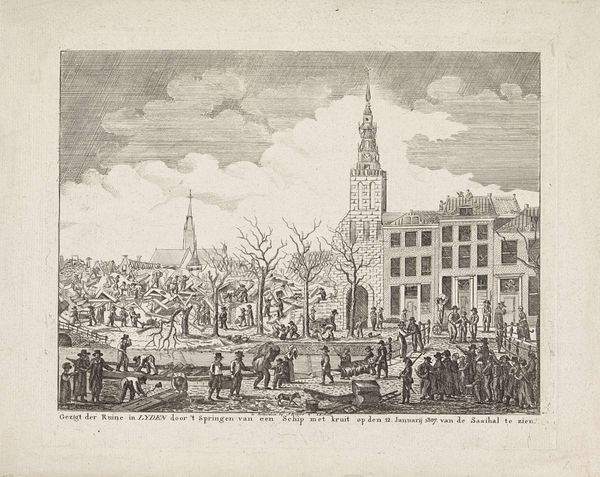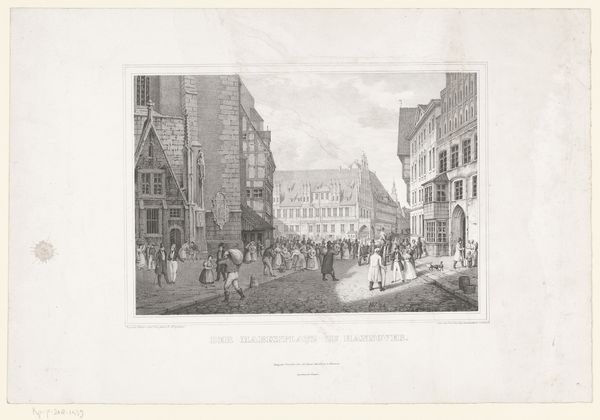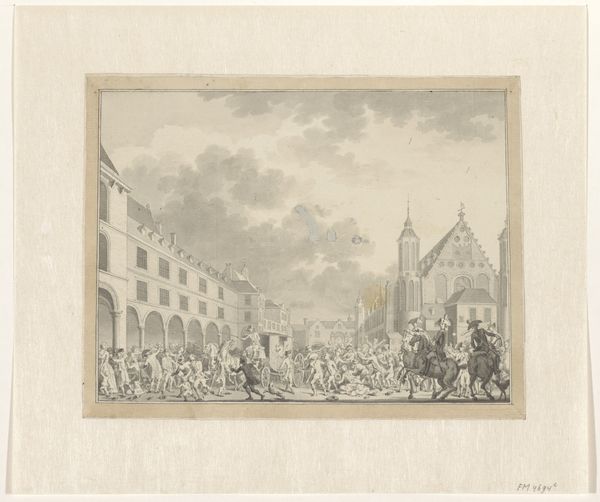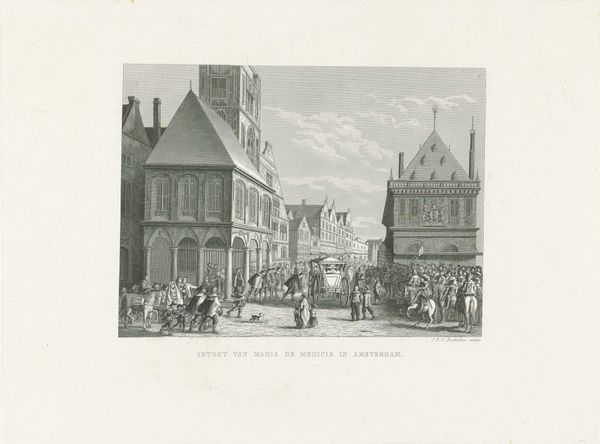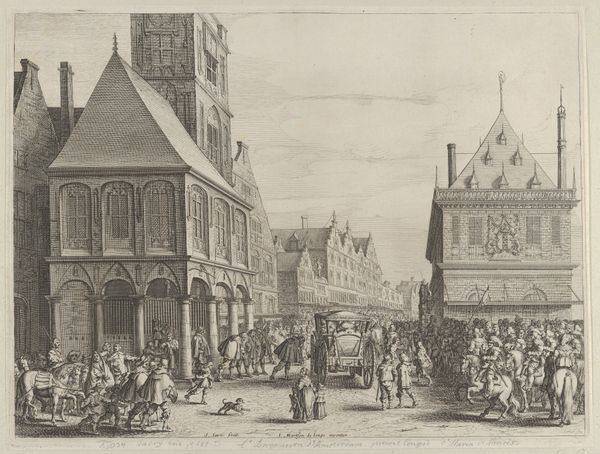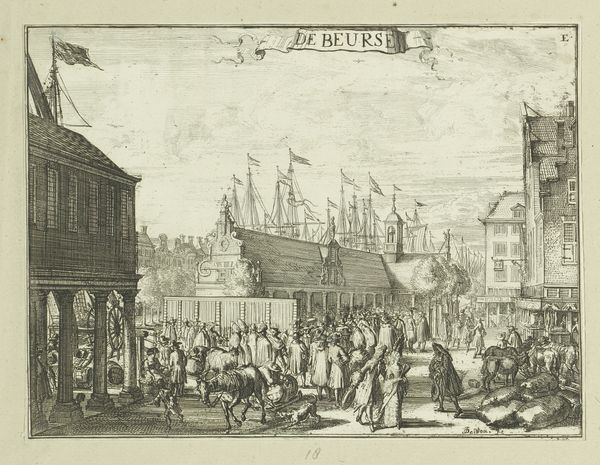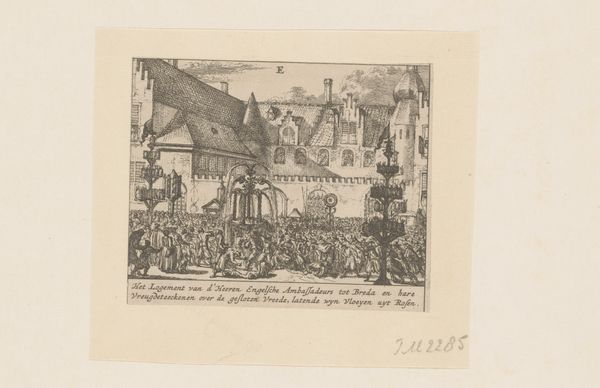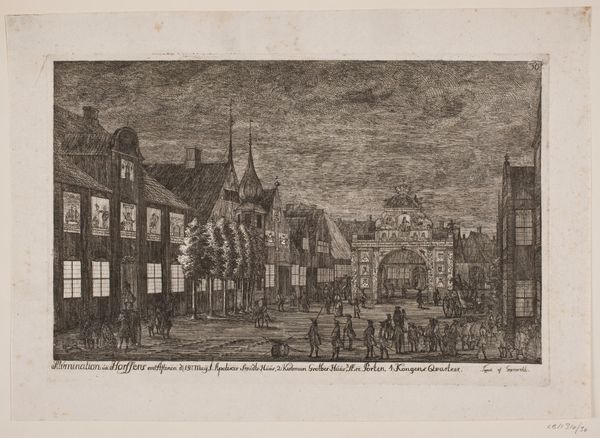
Grote Markt na de onthulling van het standbeeld van Laurens Coster, 1856 1856
0:00
0:00
print, engraving
#
statue
# print
#
group-portraits
#
cityscape
#
history-painting
#
engraving
Dimensions: height 170 mm, width 250 mm
Copyright: Rijks Museum: Open Domain
Editor: So, here we have Carel Christiaan Antony Last's 1856 engraving, "Grote Markt na de onthulling van het standbeeld van Laurens Coster," housed at the Rijksmuseum. It's a busy cityscape showing a crowd gathered for the unveiling of a statue. What jumps out to me is the sense of civic pride it seems to capture. How do you interpret this work, considering its historical moment? Curator: It's more than just civic pride; it’s about the *construction* of national identity. In 1856, the Netherlands was actively defining itself as a nation, and public monuments like this one played a crucial role. Last's print disseminates an image intended to solidify a particular historical narrative: Laurens Coster as the Dutch inventor of printing. Editor: Oh, I see! So the print isn’t just *depicting* an event; it’s *participating* in the making of history. Was Coster’s claim universally accepted at the time, or was there debate? Curator: Absolutely, and that's the fascinating part. The "truth" of Coster's invention was heavily contested. Promoting him served a political purpose: it reinforced Dutch cultural superiority during a period of intense nationalism. The print serves as propaganda, albeit subtle. It invites viewers to see themselves as part of a shared, glorified past. Look how the engraver gives visual weight to the statue in the center. What does that placement suggest? Editor: That’s fascinating. So the act of creating and disseminating this print is an argument in itself. This feels so performative for such a long-ago moment. I had no idea there were so many implications to an ostensibly historical document. Thank you for explaining! Curator: Indeed. By understanding the socio-political context, we begin to see beyond the surface and engage with the underlying narratives and power dynamics at play within visual culture. Always remember that "history" is always being re-written with contemporary views.
Comments
No comments
Be the first to comment and join the conversation on the ultimate creative platform.
